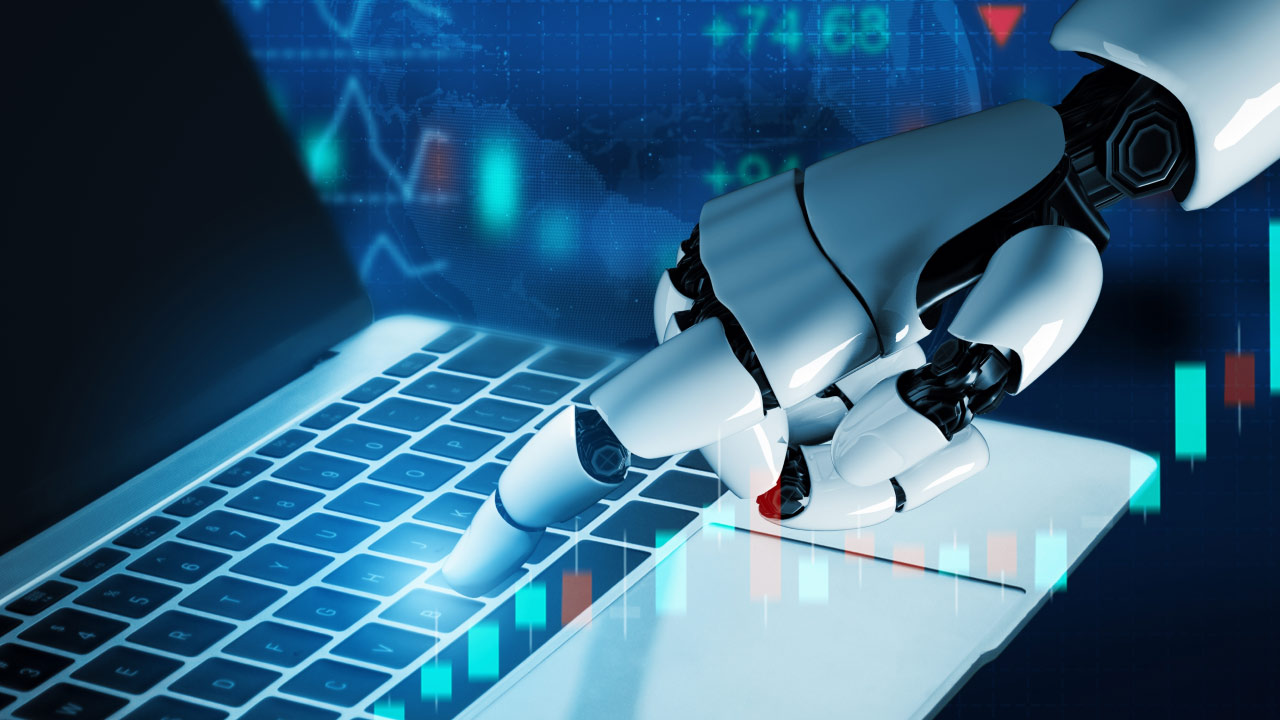Traditionally, analyzing forex market data and trading decisions involved human intuition and experience. However, in recent years, AI has gained popularity among traders. AI algorithms can now process massive datasets quickly, identifying opportunities at a fast pace.
Let’s discuss how AI is changing forex trading in 2024.
Trading bots for automated trading
AI-powered programs can analyze massive datasets in real-time, identifying trends and executing trades at speeds far exceeding human capabilities. Trading bots act as trading assistants, constantly scanning the market and implementing pre-defined strategies.
Algorithmic trading offers a broader approach, utilizing AI to create and execute complex trading plans based on market signals. While offering significant advantages, complete reliance on such automation can be risky. Unforeseen events and market fluctuations necessitate human oversight and the ability to adapt strategies as needed.
AI in risk management
Risk management is paramount for precise trading. AI can analyze vast amounts of historical data and market trends to identify and mitigate potential risks.
- Optimal stop-loss orders: AI can analyze historical volatility and price movements to set stop-loss orders at strategic levels, minimizing potential losses if the market turns unfavorable.
- Tailored position sizing: AI can adjust trading positions based on real-time market fluctuations. This ensures traders are not overexposed during periods of high volatility and can potentially maximize gains during calmer periods.
- Early warning systems: AI can continuously monitor news, economic data releases, and social media sentiment. This allows for early detection of potential risks that could impact trades, providing traders with time to adjust their strategies or exit the market altogether.
Develop improved predictive models
Machine learning is a subset of AI, enabling the development of sophisticated models that analyze vast datasets and attempt to predict future market movements. These models identify complex patterns and relationships in historical data that might escape human analysts.
By analyzing these patterns, AI can potentially predict future price movements and identify trading opportunities. However, it is crucial to remember that these are predictions, not assurances. The unpredictability of markets and unforeseen events can disrupt even the most sophisticated AI models.
Real-time market monitoring
Unlike humans who require sleep and breaks, AI-powered systems can continuously monitor the forex market 24/7. This allows them to analyze news events, economic data releases, and social media sentiment in real-time.
By constantly monitoring these factors, AI can identify potential trading opportunities as they arise, giving traders a critical edge in the forex market. For instance, an AI system might detect a sudden surge in social media sentiment around a particular currency due to unexpected political news. This could signal a potential opportunity to capitalize on a rapid price movement.
High-frequency trading (HFT)
HFT uses AI's fast processing power to execute multiple trades within milliseconds. It can analyze vast amounts of data and capitalize on tiny price movements that occur throughout the day at incredible speeds.
However, HFT requires significant capital, complex infrastructure, and in-depth knowledge of the market. It suits experienced traders with the resources to manage the risks involved.
Personalized trading strategies
The one-size-fits-all approach in forex trading has faded with the emergence of AI. Artificially intelligent systems can analyze a trader's risk tolerance, investment goals, and trading history to create personalized trading strategies. This allows traders of all experience levels to gain from AI's capabilities.
For example, a risk-averse trader might be matched with a conservative strategy focused on long-term trends, while a more adventurous trader could be paired with a strategy that capitalizes on short-term market movements. This personalization ensures that traders are using strategies aligned with their risk profiles and goals.
Improved sentiment analysis
AI deciphers the collective sentiment of the market through sentiment analysis. This involves processing vast amounts of text data from news articles, social media posts, and financial blogs.
By analyzing the tone and language used, AI can gauge market optimism, pessimism, or uncertainty surrounding specific currencies or economic events. This information helps traders, allowing them to make informed decisions based on the prevailing market mood.
Advancement in backtesting
Backtesting is the process of testing a trading strategy on historical data to assess its potential effectiveness. AI can make it possible to develop highly sophisticated backtesting models.
These models can incorporate a wider range of variables and market conditions, providing traders with a more realistic picture of how their strategies might perform in real-world scenarios. This allows for better strategy development and optimization before risking capital in live markets.
Automated PMS
Robo-advisors are automated systems that use algorithms to automatically build and manage forex portfolios based on risk tolerance and goals. They offer automated portfolio management solutions (PMS).
These services leverage AI algorithms to build and manage forex portfolios based on a trader's individual risk tolerance and investment goals. This also allows for a more hands-off approach to forex trading, potentially appealing to busy individuals or those new to the market complexities.
Balancing the risks and advantages of AI in forex
With the implementation of AI in forex, traders gain from faster analysis and improved risk management. However, AI is not foolproof. Markets are unpredictable and overreliance on AI can be risky. Proper forex trading still requires some human involvement and sound decision-making alongside the power of AI.
Disclaimer: All material published on our website is intended for informational purposes only and should not be considered personal advice or recommendation. As margin FX/CFDs are highly leveraged products, your gains and losses are magnified, and you could lose substantially more than your initial deposit. Investing in margin FX/CFDs does not give you any entitlements or rights to the underlying assets (e.g. the right to receive dividend payments). CFDs carry a high risk of investment loss.




